In 2017, conflict-ridden Yemen suffered the world’s worst on record cholera outbreak. Protracted war and air strikes on water supply and sanitation infrastructure resulted in a complex emergency in the country. Among the major international agencies, World Health Organisation (WHO) is assisting the Ministry of Public Health and Population of Yemen along with Health and WASH cluster partners to contain the outbreak through technical and logistical support.
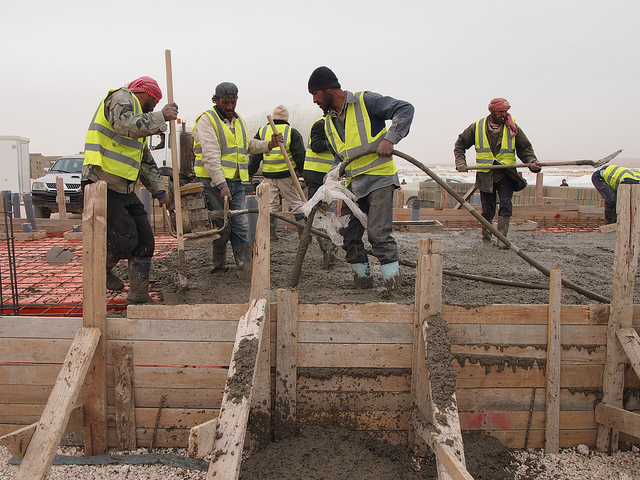 Meanwhile, at refugee camps like Zaatari in Jordan, people walk miles and wait in endless lines to use unsanitary facilities, raising the possibility of disease. The situation is worse for girls and young women, who risk being attacked using communal toilets late at night. Currently, UNICEF and its implementing partners are responding to the WASH needs of Syrian refugees in the Zaatari Refugee Camp. (Picture on left: Building new toilet blocks at Zaatari refugee camp, Jordan, Photo Courtesy: Caroline Gluck/Oxfam)
Meanwhile, at refugee camps like Zaatari in Jordan, people walk miles and wait in endless lines to use unsanitary facilities, raising the possibility of disease. The situation is worse for girls and young women, who risk being attacked using communal toilets late at night. Currently, UNICEF and its implementing partners are responding to the WASH needs of Syrian refugees in the Zaatari Refugee Camp. (Picture on left: Building new toilet blocks at Zaatari refugee camp, Jordan, Photo Courtesy: Caroline Gluck/Oxfam)
Merriam Webster defines an emergency as an unexpected and usually dangerous situation that calls for immediate action. Armed conflicts, floods, droughts, earthquakes are some of the major causes of emergency situations. People caught in such humanitarian situations are much more vulnerable to diseases, often caused by lack of sanitation, inadequate water supply and deplorable hygiene. Increased risk of disease also arises from overcrowding, exposure to new pathogens and the disruption of routine and safe habits. Diarrhoea, cholera and other infectious diseases transmitted from faeces to mouth are the some of the most severe health problems.
Current approaches to WASH during Emergencies
The main objective of any WASH intervention during emergencies is to reduce the transmission of faecal-oral diseases and exposure to disease-bearing vectors. Approaches to WASH in emergencies may vary according to need, culture, context and the nature of the disaster or conflict. In Yemen, WHO and other partners are involved in efforts which include strengthening disease surveillance; supporting operations in diarrhoeal treatment centres and oral rehydration corners; training the health workforce on case management; deploying rapid response teams; and improving the availability of safe water and sanitation. Meanwhile, one of the major WASH activities undertaken in Zaatari Camp by UNICEF is the supply of some 3,800 cubic meters of safe water on a daily basis. This water supply is done through water trucking from two internal boreholes (operated by UNICEF) and a number of external boreholes (owned and operated by private individuals).
However, certain basic standards and protocols are maintained during emergency response by various organisations. The Sphere Handbook is one of the most widely known and internationally recognized sets of common principles and universal minimum standards in humanitarian response. The Sphere movement was started in 1997 by a group of humanitarian organisations aiming to improve the quality of humanitarian response.
The term ‘sanitation’, throughout the Sphere handbook, refers to excreta disposal, vector control, solid waste disposal and drainage. The Sphere Minimum Standards believe that providing sufficient water and sanitation facilities is not enough to ensure their optimal use or impact on public health. Thus, in order to achieve the maximum benefit from a WASH response, it is desirable to ensure that disaster-affected people have the necessary information, knowledge and understanding to prevent water and sanitation-related disease. These Minimum Standards in Sphere Handbook also urge humanitarian organisations to involve the affected people in the design and maintenance of WASH facilities. International Federation of Red Cross and Red Crescent Societies, Oxfam, Plan International and Save the Children are some of the organisations which adhere to the Minimum Standards set out in the SPHERE charter.
WASH innovations for Emergencies
When we hear the term ‘innovation’ in WASH we think of a new design of a toilet or other hardware innovations. But, innovation is not limited to hardware but it also involves software, especially for WASH interventions during emergencies which are complex in nature. Some of the hardware and software innovations for WASH during and post-emergencies are:
Tiger worm toilets which turn human waste into fertilizer could prove to be an affordable and sustainable sanitation solution for increasingly crowded refugee camps. In the conventional twin pit toilet, the decomposition process to turn human waste into compost takes about two years after closing of the pit. But in the tiger worm toilet the earthworms decompose human waste in a faster manner and the waste is converted into vermin-compost in about 60 days. The tiger worm toilets were first deployed by Oxfam in slums in the Liberian capital of Monrovia in 2013, and have since been installed in refugee camps in Ethiopia and Myanmar.
Zimba is a low-cost device that automatically mixes chlorine into water in the correct proportion, regardless of the flow rate of the water. It does not require electricity, no expensive cartridges and uses only gravity to operate. As opposed to conventional water purifiers, a Zimba can handle thousands of litres per day and is therefore able to supply more people with their clean water needs. Last November, Zimba purifiers were installed in Rohingya refugee camps at Cox’s Bazaar by Environmental Interventions Unit of Infectious Diseases Division at the International Centre for Diarrhoeal Disease Research, Bangladesh.
SuperTowel
SuperTowel is a reusable and highly durable towel that includes a permanently bonded anti-microbial layer. It is designed to provide clean hands without using soap and using only a small amount of water. The SuperTowel project is supported by Elrha’s Humanitarian Innovation Fund programme, a grant making facility supporting organisations and individuals to identify, nurture and share innovative and scalable solutions to the most pressing challenges facing effective humanitarian assistance.
CLTS during emergencies and fragile-contexts
Community Led Total Sanitation (CLTS) is an innovative methodology for mobilising communities to completely eliminate open defecation by means of collective behaviour change. Communities are facilitated to conduct their own appraisal and analysis of open defecation and take their own action to become open-defecation free (ODF). CLTS is spread across 70 countries in South and South-East Asia, Africa and Latin America and at least 35 countries have CLTS as part of their national policies.
During more than 20 years of civil conflict in Somalia, sanitation interventions were mostly limited to construction of emergency latrines for affected populations or education on sanitation and hygiene (using the Participatory Hygiene and Sanitation Transformation (PHAST) approach) followed by fully subsidised latrine programmes for selected households. However, there was little evidence that these interventions achieved the desired results as surveys in Somalia showed that access to sanitation decreased between 1995 and 2012. With this in mind, UNICEF WASH team in Somalia decided to introduce CLTS.
The CLTS intervention by UNICEF was very successful and Somalia went from zero ODF villages to 144 (self-declared) ODF villages by August 2014. According to a UNICEF field note, the weak or absent government engagement on sanitation in fragile states and insecure environments could be considered as an enabling factor for CLTS, since government support for latrine subsidies had worked against CLTS in other countries.

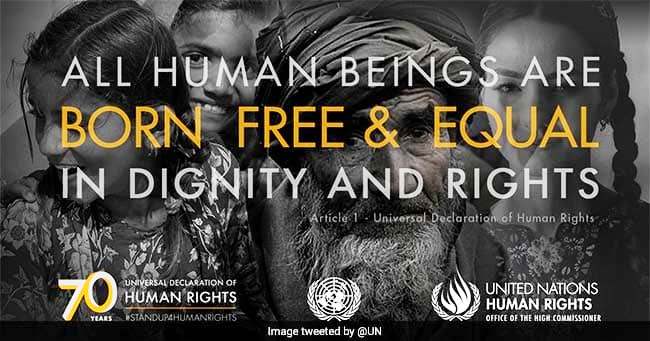
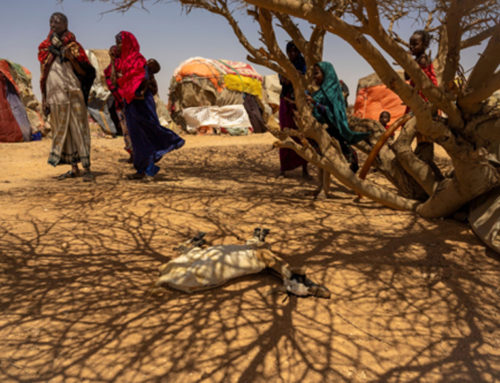
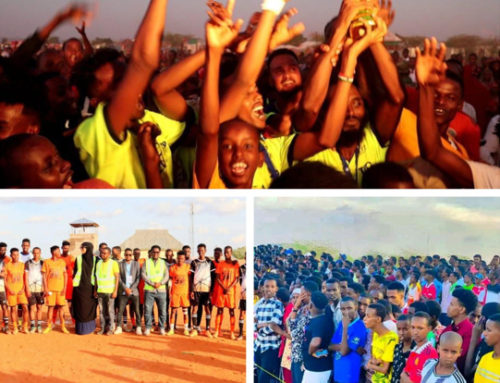
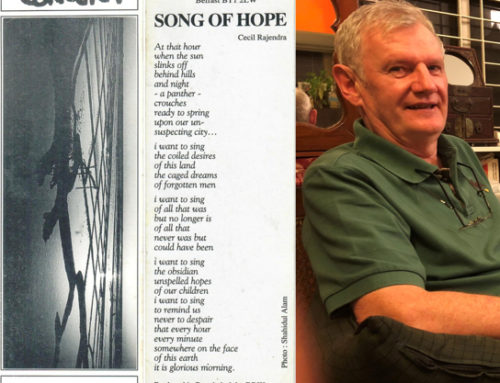
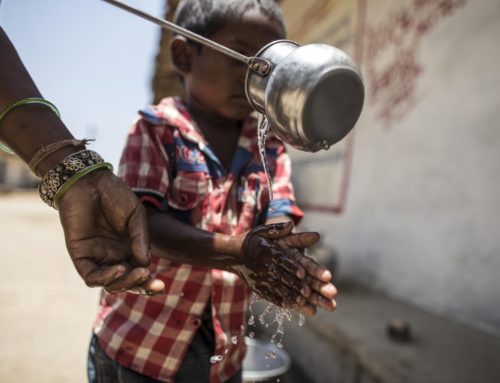
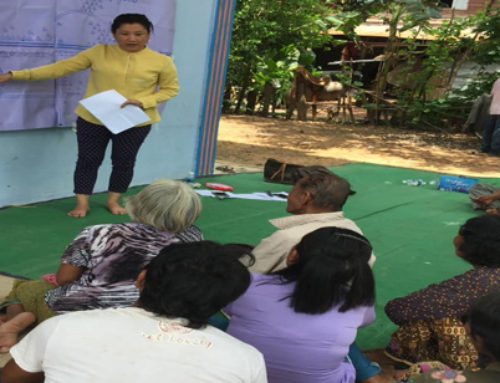
Leave A Comment